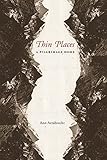Thin Places : A Pilgrimage Home / Ann Armbrecht.
Material type: TextPublisher: New York, NY : Columbia University Press, [2008]Copyright date: ©2008Description: 1 online resource (296 p.)Content type:
TextPublisher: New York, NY : Columbia University Press, [2008]Copyright date: ©2008Description: 1 online resource (296 p.)Content type: - 9780231146531
- 9780231518291
- Anthropologists -- Nepal -- Hedanga -- Biography
- Anthropologists -- United States -- Biography
- Women anthropologists -- Biography -- Nepal -- Hedanga
- Women anthropologists -- Biography -- United States
- Women anthropologists -- Nepal -- Hedanga -- Biography
- Women anthropologists -- United States -- Biography
- Yamphu (Nepalese people) -- Social life and customs -- Nepal -- Hedanga
- Yamphu (Nepalese people) -- Nepal -- Hedanga -- Social life and customs
- SOCIAL SCIENCE / Anthropology / General
- 305.89549 22
- DS493.9.Y36 A76 2009
- DS493.9.Y36
- online - DeGruyter
- Issued also in print.
| Item type | Current library | Call number | URL | Status | Notes | Barcode | |
|---|---|---|---|---|---|---|---|
 eBook
eBook
|
Biblioteca "Angelicum" Pont. Univ. S.Tommaso d'Aquino Nuvola online | online - DeGruyter (Browse shelf(Opens below)) | Online access | Not for loan (Accesso limitato) | Accesso per gli utenti autorizzati / Access for authorized users | (dgr)9780231518291 |
Browsing Biblioteca "Angelicum" Pont. Univ. S.Tommaso d'Aquino shelves, Shelving location: Nuvola online Close shelf browser (Hides shelf browser)

|

|

|

|

|

|

|
||
| online - DeGruyter Honoring Elders : Aging, Authority, and Ojibwe Religion / | online - DeGruyter Seeking Justice in Child Sexual Abuse : Shifting Burdens and Sharing Responsibilities / | online - DeGruyter Privatization : Successes and Failures / | online - DeGruyter Thin Places : A Pilgrimage Home / | online - DeGruyter Four Jews on Parnassus-a Conversation : Benjamin, Adorno, Scholem, Schönberg / | online - DeGruyter Wondrous Brutal Fictions : Eight Buddhist Tales from the Early Japanese Puppet Theater. | online - DeGruyter Japan's Cold War : Media, Literature, and the Law / |
Frontmatter -- Contents -- Preface -- Acknowledgments -- Part 1. Departure -- Part 2 . Initiation -- Part 3. Return -- Part 4 . Birth -- Bibliography
restricted access online access with authorization star
http://purl.org/coar/access_right/c_16ec
Thin Places is an eloquent meditation on what it means to move between cultures and how one might finally come home, a particular paradox in a culture that lacks deep ties to the natural world. During the 1990s, Ann Armbrecht, an American anthropologist, made several trips to northeastern Nepal to research how the Yamphu Rai acquired, farmed, and held onto their land; how they perceived their area's recent designation as a national park and conservation area; and whetheras she believedthey held a wisdom about living on the earth that the industrialized West had forgotten. What Armbrecht found instead were men and women who shared her restlessness, people also driven by the feeling that there must be more to life than they could find in their village. "We each blamed our dissatisfaction on something in the world," she writes, "not something in ourselves or in the stories we told ourselves about that world. If only we lived elsewhere, then we would be at home." Charting Armbrecht's travels in the mountains of Nepal and in the United States and her disintegrating marriage back home, Thin Places is ultimately an exploration not of the sacred far-off but of the sacredness of places that are betweenbetween the internal and external landscape, the self and others, and the self and the land. She finds that home is not a place where we arrive but a way of being in place, wherever that place may be. Along the way, Armbrecht explores the disconnections in our most intimate relationships, how they stem from the same disconnections that create our destruction of the land, and how one cannot be healed without attending to the other.
Issued also in print.
Mode of access: Internet via World Wide Web.
In English.
Description based on online resource; title from PDF title page (publisher's Web site, viewed 02. Mrz 2022)


